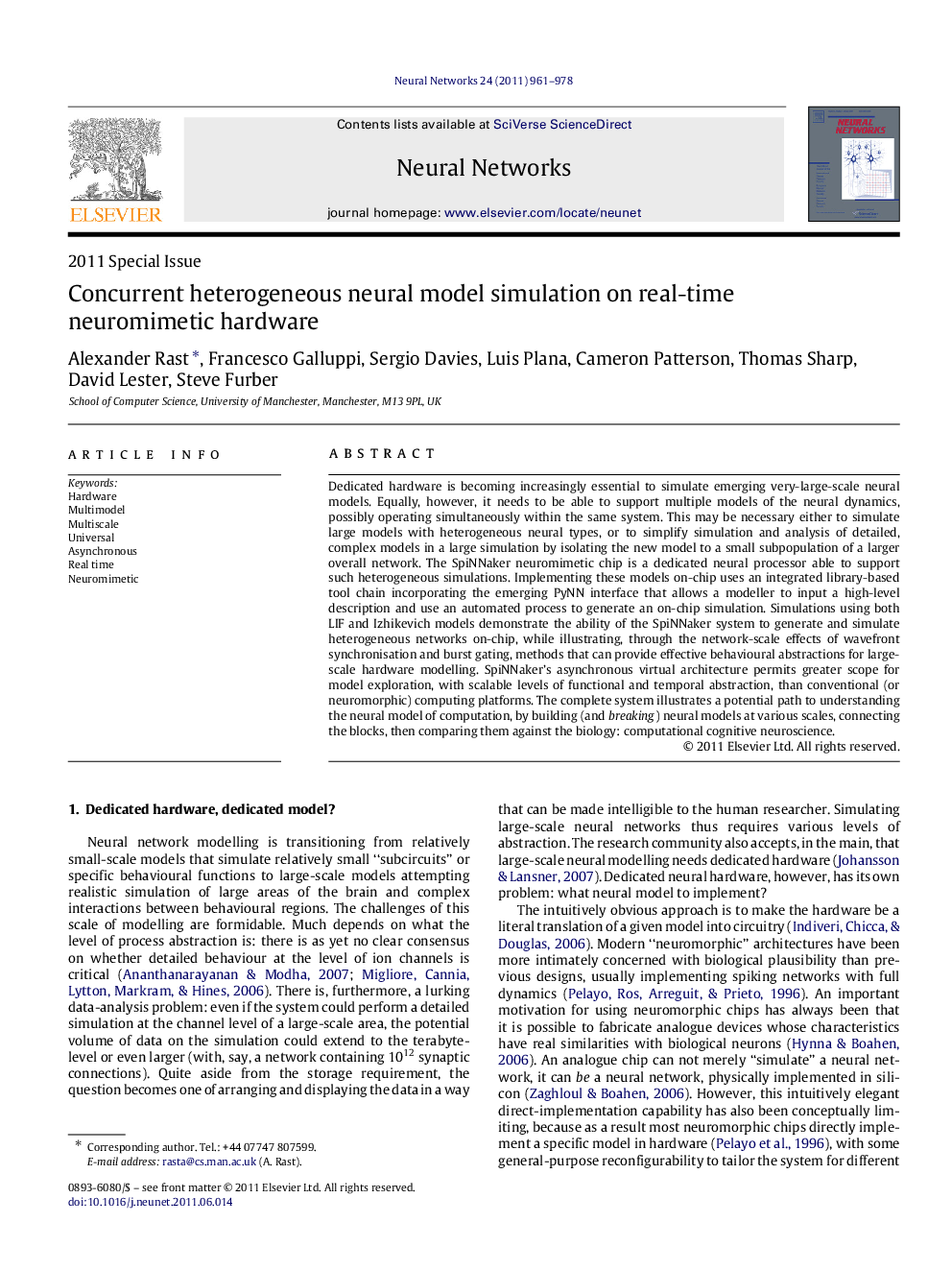| Article ID | Journal | Published Year | Pages | File Type |
|---|---|---|---|---|
| 406852 | Neural Networks | 2011 | 18 Pages |
Dedicated hardware is becoming increasingly essential to simulate emerging very-large-scale neural models. Equally, however, it needs to be able to support multiple models of the neural dynamics, possibly operating simultaneously within the same system. This may be necessary either to simulate large models with heterogeneous neural types, or to simplify simulation and analysis of detailed, complex models in a large simulation by isolating the new model to a small subpopulation of a larger overall network. The SpiNNaker neuromimetic chip is a dedicated neural processor able to support such heterogeneous simulations. Implementing these models on-chip uses an integrated library-based tool chain incorporating the emerging PyNN interface that allows a modeller to input a high-level description and use an automated process to generate an on-chip simulation. Simulations using both LIF and Izhikevich models demonstrate the ability of the SpiNNaker system to generate and simulate heterogeneous networks on-chip, while illustrating, through the network-scale effects of wavefront synchronisation and burst gating, methods that can provide effective behavioural abstractions for large-scale hardware modelling. SpiNNaker’s asynchronous virtual architecture permits greater scope for model exploration, with scalable levels of functional and temporal abstraction, than conventional (or neuromorphic) computing platforms. The complete system illustrates a potential path to understanding the neural model of computation, by building (and breaking) neural models at various scales, connecting the blocks, then comparing them against the biology: computational cognitive neuroscience.
► A configurable dedicated neural hardware platform with universal model support. ► SpiNNaker chip uses a multicore architecture with asynchronous interconnect. ► Chip runs multiple heterogeneous models concurrently in the same simulation. ► Medium- to large-scale models run in real time: ∼6–120×∼6–120× software simulation speed. ► Introduces a methodology to run multiple levels of model abstraction in hardware.
